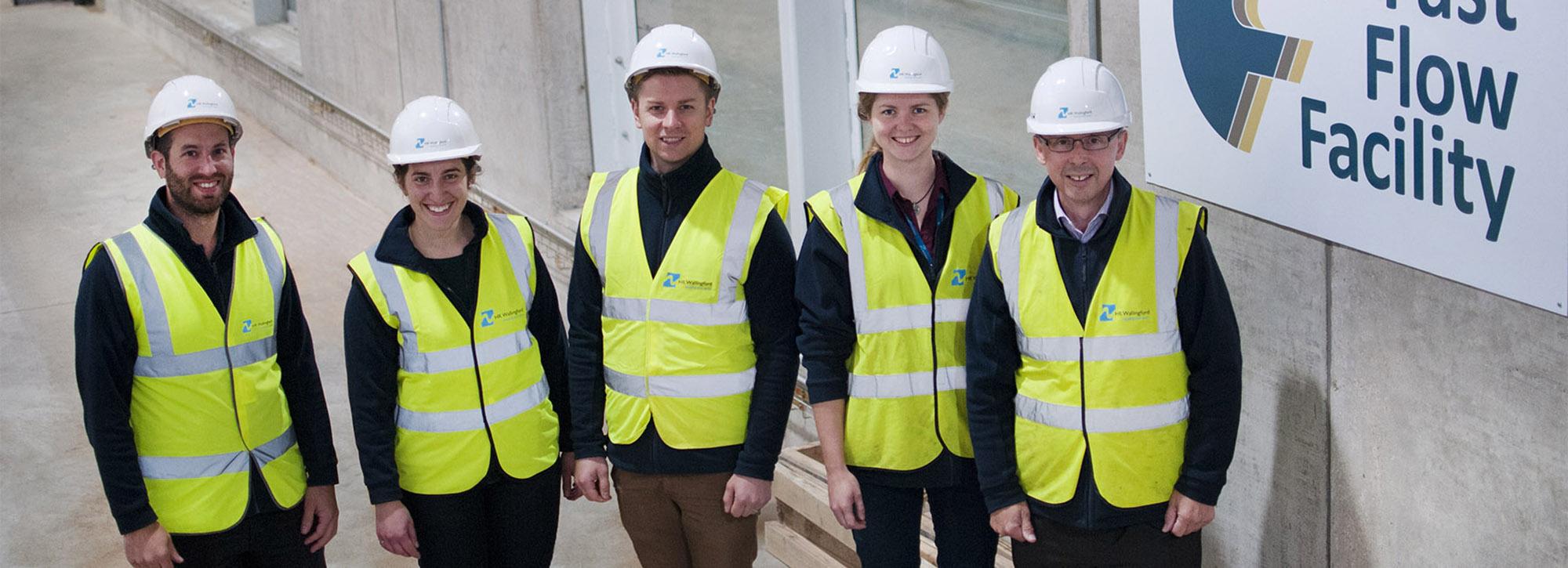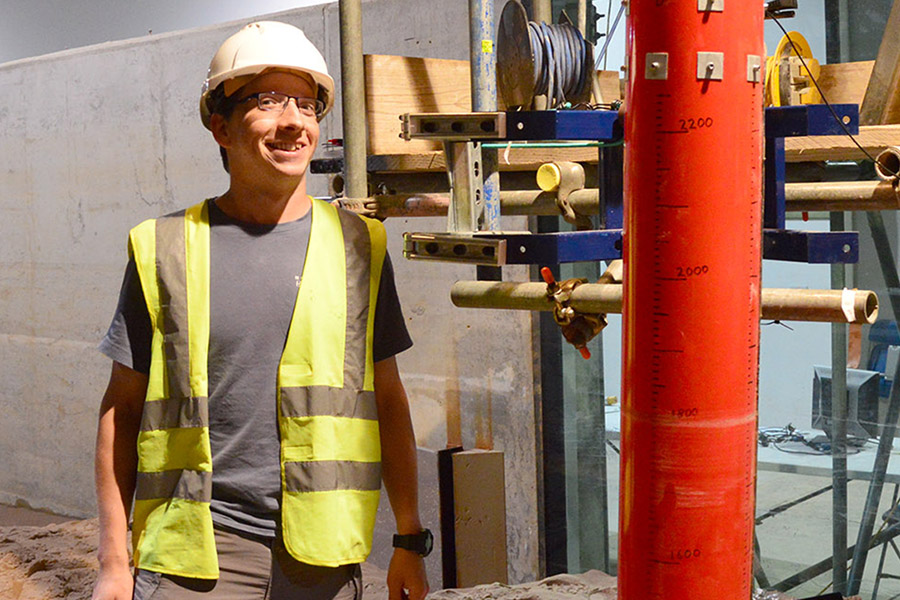
Working with E.ON and Oxford University to minimise the effects of scour on wind turbine foundations
HR Wallingford has completed a ten week project working with Oxford University’s Department of Engineering Science and energy company E.ON, examining different forms of scour protection to assure the stability of offshore wind turbine monopiles, and to help identify which scour remediation strategies are the most effective in maintaining foundation performance.
E.ON and HR Wallingford are jointly funding the research including the experiments at HR Wallingford’s physical laboratory test facilities as part of the research project: ‘Foundation Response to Scour Protection’.
All monopile founded wind turbine structures vibrate to some degree during operation, with the frequency of resonant vibration determined by the monopile, tower, nacelle and blade dimensions and interactions of the foundation with the soil. The design process addresses this system behaviour, and yields optimised installation depths for each monopile installation.
Erosion around the foundation due to the process of seabed scour causes the exposed length of the monopile at the seabed to change, and can alter the frequency at which the system resonates. If the turbine structure begins to vibrate excessively due to this behaviour, it will need to be shut down, leading to loss of revenue and potentially significant remediation costs.
Prof Byron Byrne from the Department of Engineering Science at the University of Oxford, said: “Oxford University is applying its expertise in geotechnical engineering and structural analysis to this research for which we have appropriately scaled the monopile and turbine structure and exposed it to scour and erosion processes. In the experiments, we are measuring the structural dynamic responses, quantifying the amplification of the vibration as it changes with erosion at the base of the monopile, and for different scour protection systems.”
The physical modelling tests, at a scale of 1:20, are being carried out in HR Wallingford’s Fast Flow Facility, which at 75 m long and 8 m wide, can hold a million litres of water, and can generate waves up to 1 m high and flows of over 2 m/second.
Prof Richard Whitehouse, Chief Technical Director, Sediment Dynamics, at HR Wallingford, said: “We are using our Fast Flow Facility to test the response of a monopile foundation employing different scour protection measures including rock protection and tyre filled nets. We have designed the local and global scour scenarios for the project with a fully mobile sediment bed model and worked closely with Oxford University to deliver world class experiments on the interaction between scour and structural response.”
Philippa Cassie, Offshore Foundations Engineer at E.ON Climate and Renewables, said: “E.ON has invested more than €10 billion in renewable energy since 2007 and is responsible for about 5.3 GW of renewable generation capacity in Europe and North America. Our portfolio includes one of the world’s largest onshore wind parks in Roscoe, Texas, and with partners DONG Energy and Masdar we operate London Array off the coast of Kent, one of the world’s largest offshore wind parks. By conducting this research, we are aiming to quantify the contribution of scour and scour protection measures in structural terms to inform proactive management of the operational fleet and designs on future projects.”

For this project, Oxford University’s DEng student Russell Mayall is being co-supervised by the University, E.ON and HR Wallingford as part of the UK Engineering and Physical Sciences Research Council’s Centre for Doctoral Training in Renewable Energy Marine Structures, a collaboration between Oxford University and Cranfield University.
Want to know more?
